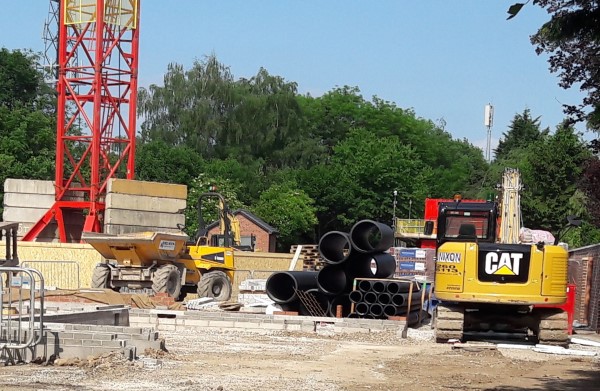House-building in England: top five and bottom five local authorities

Following the publication of the latest house-building figures for England, BECG can reveal the five local authorities where the most new homes are being built, and those bringing up the rear.
Because it wouldn’t make much sense to compare, say, Manchester directly to the Scilly Isles, we’ve calculated the percentage increase in homes over the year 2016-17* (the latest for which figures are available).
So which areas are giving Secretary of State James Brokenshire a good night’s sleep and which are keeping him up?
Top five local authorities for house-building
1. Tower Hamlets 4.09% increase (4,684 new homes)
2. Vale of White Horse 2.89% increase (1,615 homes)
3. Newcastle-upon-Tyne 2.17% increase (2,767 homes)
4. Salford 2.16% increase (2,482 homes)
5. Greenwich 2.14% increase (2,380 homes)
Bottom five local authorities for house-building
323. Epping Forest 0.27% increase (149 homes)
324. Chesterfield 0.26% increase (130 homes)
325. Adur 0.23% increase (64 homes)
326. Wirral 0.22% increase (128 homes)
327. Blackpool -0.22% (-150 homes)
At the top of the list is Tower Hamlets, which saw an impressive 4,684 dwellings built between 2016 and 2017, a total percentage increase 4.09%. This dwarfs even second place authority Vale of White Horse on 2.89%.
It’s a mixed bag in the North West. Salford continues its growth and sits comfortably in the top five nationally with 2,380 dwellings built in total.
In Merseyside however, Wirral is second to last with only 128 dwellings built. At the very bottom of the list is Blackpool, which had an overall reduction in their dwelling stock. Several high-profile tower block demolitions in 2016 may account for this unenviable statistic. Both areas have significant house-building plans so hopefully they won’t be at the bottom of the list for long.
BECG is a sector-specialist, multi-disciplinary communications consultancy for the Built Environment sectors. Find our more about how we can help your business at becg.com and follow us on Twitter at @becgUK, or give Iain a call for a chat over a coffee.
* Figures taken from the Ministry of Housing, Communities and Local Government statistical report, May 2018.
Selected industry experts bring you insight and expert advice, across a range of sectors.
Subscribe for free to receive our fortnightly round-up of property tips and expertise
Selected industry experts bring you insight and expert advice, across a range of sectors.
Subscribe for free to receive our fortnightly round-up of property tips and expertise



